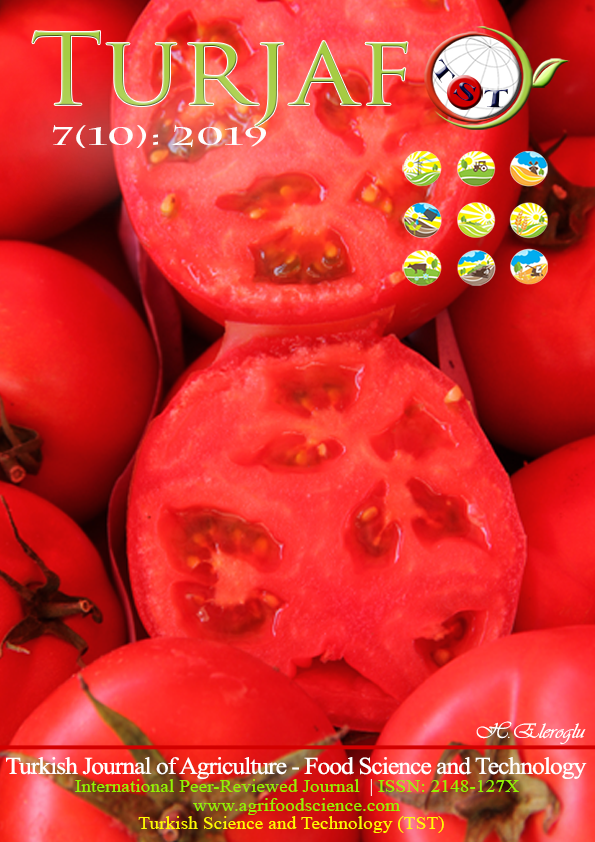Effects of Organic Fertilizer and Drying Methods on Total Phenolic Content and Antioxidant Capacity of Organic White Tea (Camellia sinensis (L.) Kuntze)
DOI:
https://doi.org/10.24925/turjaf.v7i10.1641-1647.2714Keywords:
Camellia, White tea, Polyphenol, Antioxidant, Phenolic constituentsAbstract
The aim of this study was to determine the effect of different fertilizer doses and drying methods on total phenolic contents and antioxidant activity of organic white tea (Camellia sinensis (L.) Kuntze) obtained from Hemşin Valley, region of Rize/Turkey. The determination of phenolic constituents was done by the Folin-Ciocalteau method and the determination of antioxidant activity by the FRAP method. The results showed that the phenolic content of white tea was as follows: 443,7- 506,2 µg GAE/g DW in the drying oven, 421,4- 473,6 µg GAE/g DW in shadow and 434,4- 485,2 µg GAE/g DW in the liofilizator. According to the FRAP method the antioxidant activity was as follows: 1130,1-1176,9 mg FeSO4/gr DW in drying oven, 1141,2-1157,1 mg FeSO4/gr DW in shadow and 1005,3-1183,2 mg FeSO4/gr DW in lyophylizator. The results revealed that different fertilizer doses and drying methods had important effects on the total phenolic content and antioxidant activity of white tea.Downloads
Published
12.10.2019
How to Cite
Yurteri, E., Özcan, A., & Seyis, F. (2019). Effects of Organic Fertilizer and Drying Methods on Total Phenolic Content and Antioxidant Capacity of Organic White Tea (Camellia sinensis (L.) Kuntze). Turkish Journal of Agriculture - Food Science and Technology, 7(10), 1641–1647. https://doi.org/10.24925/turjaf.v7i10.1641-1647.2714
Issue
Section
Research Paper
License
This work is licensed under a Creative Commons Attribution-NonCommercial 4.0 International License.

























